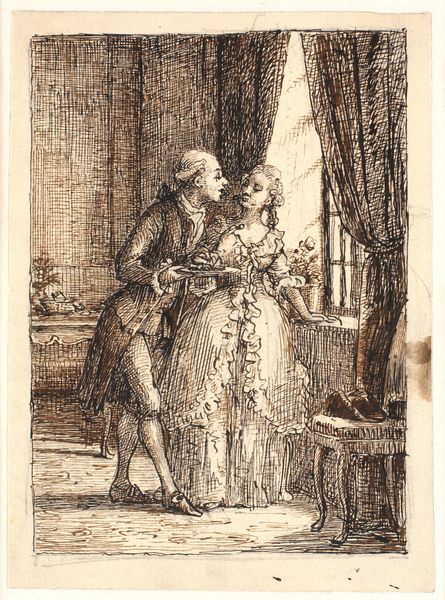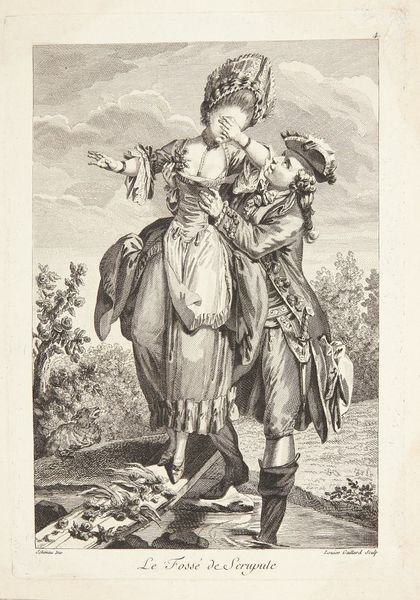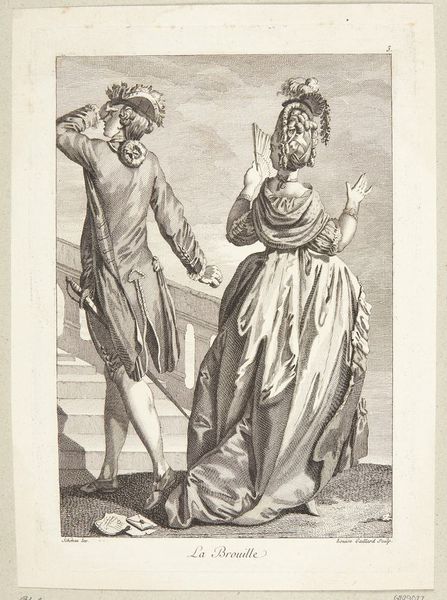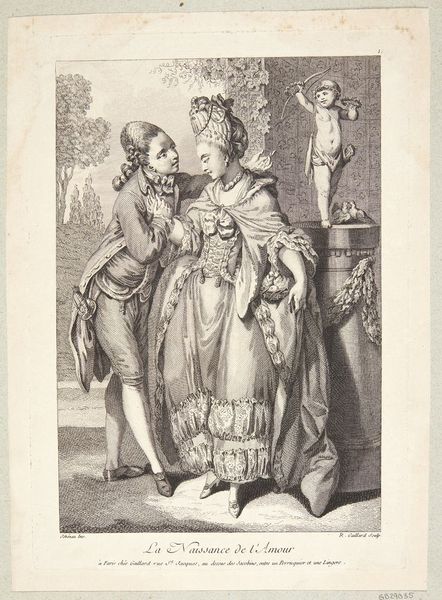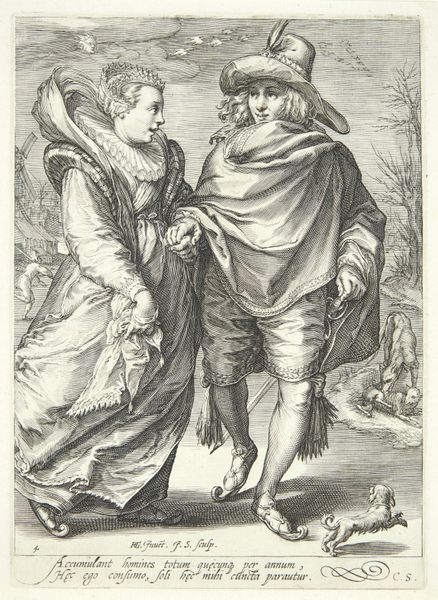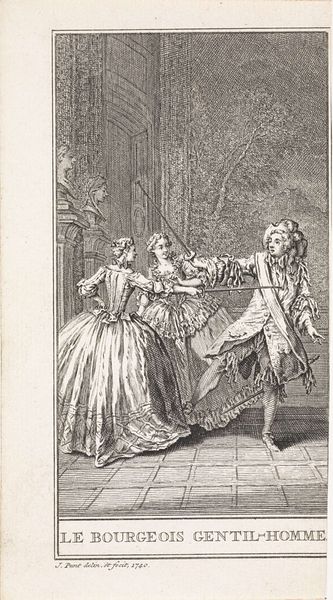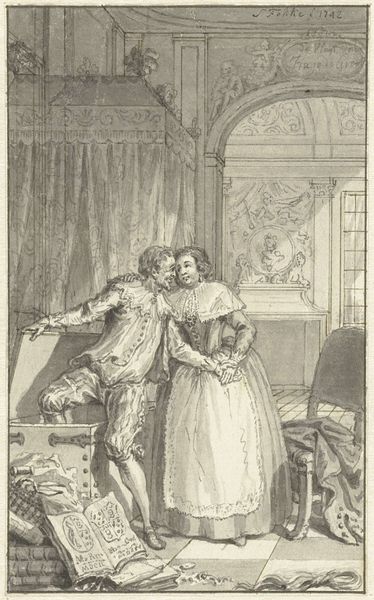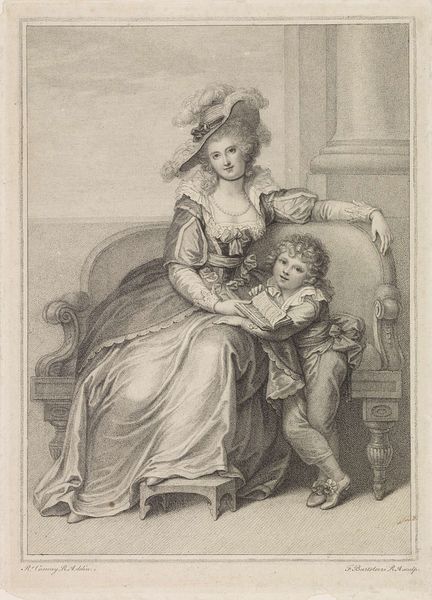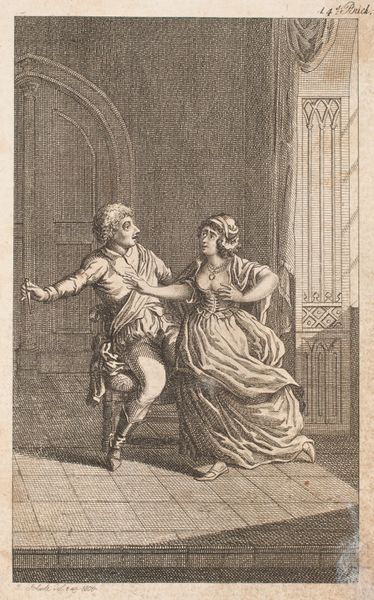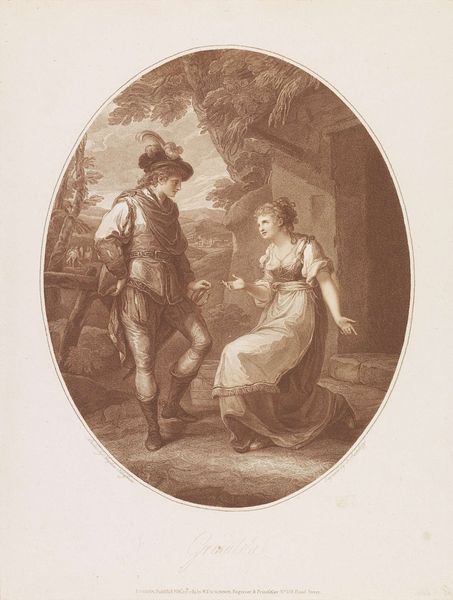
Dimensions: 268 mm (height) x 189 mm (width) (plademaal)
Editor: This is Louise Gaillard’s engraving, "To elskende, der bryder et brød," also known as "L'Amour Fixé," from 1770, here at the SMK. The figures, with their elaborate clothing and hairstyles, give it a definite Rococo feel. What's particularly striking is the moment they're sharing, breaking bread together. How do you read this piece? Curator: As a materialist, I see the broken bread not as mere symbolism of love or fidelity, but as a tangible element reflecting the economic realities of the time. Look at the detail in the costumes – the textiles, the tailoring. These weren’t accessible to the masses. What did it mean to produce and consume those materials? Editor: So, you're suggesting the act of sharing this bread, within that context, becomes… a demonstration of status, perhaps? Curator: Precisely. Bread, in 18th-century France, held significant economic weight. It's tied to agriculture, labor, trade… This simple act, reproduced through the medium of engraving - a process requiring skilled labor and specific materials - takes on a complex significance. It becomes an object of consumption itself. What processes do you think were required for an average citizen to get this engraving, displayed in their homes? Editor: Well, there's the artist's labor, the engraver's skill... And the materials: the paper, the ink... It highlights how even seemingly simple artworks are embedded in layers of production and social context. I hadn't considered the bread itself as part of that material network. Curator: It's all about unpacking the layers, from the pigments to the pastries. Everything speaks to a larger network. Editor: Right! Looking at art through the lens of materials and production reveals so much more than just aesthetic appreciation. Curator: Exactly, it exposes the socioeconomic foundations upon which art, and indeed society, is built.
Comments
No comments
Be the first to comment and join the conversation on the ultimate creative platform.
